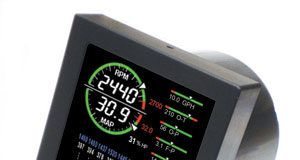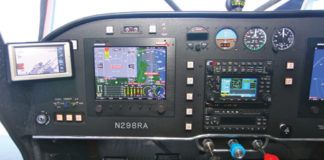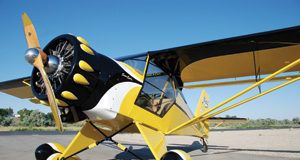You’ll notice that in this issue, we actually have two different articles about the annual condition inspection required for aircraft certificated under the Experimental/Amateur-Built rules. Dave Prizio gives us the first of a two-part series on performing the inspection, while Vic Syracuse shares some interesting things he has seen over the years doing condition inspections on various airplanes in his column “Checkpoints.”
Why the emphasis on condition inspections? Because they are really our only safety net when it comes to assuring that once an Experimental airplane is built, it remains “in a condition for safe operation.” Many of us use our airplanes a lot—it is not uncommon to see 200–300 hours per year (or more) on an airplane used for cross-country travel, and when an airplane gets used this much, it is hard to find time to really look it over, open it up, and take care of those little problems as they arise. It is a testament to modern kit aircraft that we can really check the oil, kick the tires, and light the fire most of the time—so once a year, it is important to really take it down and delve into the structure and mechanical systems that make it go.
Holding the repairman certificate for an E/A-B aircraft allows one to do the inspection and sign the aircraft off for another year. This is a double-edged sword—on the one hand, aside from making aviation much more affordable, it means that the person with the most experience with the airplane is looking it over. On the other hand, familiarity breeds contempt, as the old saying goes; it can be easy to miss something when we are too close to the problem. It is also easy to defer maintenance or repair “just a little longer” when we have the authority to do so. It would be nice if they could issue a dose of self-discipline with every certificate, but this is something each builder and owner must bring to the table themselves.
Many owners, although qualified to hold the repairman certificate by having built the airplane, refuse to sign off their own condition inspections. Why? Because of human nature—they are more comfortable having the checks and balances of having a qualified mechanic looking at the airplane with dispassionate eyes and judging what does and doesn’t need to be done. Building a good relationship with an A&P is an excellent way to do this, and learn more about airplane maintenance as well. Sure, most builders can probably pick out the flaws and problems with aircraft structure better than their mechanic—but that’s because they built that structure. When it comes to engines, engine components, and sometimes things such as plumbing, wiring, and radios, many builders simply bolted them on. Very few built and set up their own engines, so while they have a working knowledge of how to adjust things, they don’t have a mechanic’s deep background in the usual problems of a Lycoming or Continental engine—and probably have never had to diagnose a low compression cylinder.
Just as many licensed A&Ps may lack detailed fabrication skills, many builders won’t know how to accurately measure valve rocker clearance, or properly tune a carburetor. There is no shame in asking for help, even though you might hold the appropriate certificate to sign things off yourself. Newer homebuilts, once they have gotten through any teething issues, are pretty reliable, at least for a couple of hundred hours. But we get used to funny sounds and little parts that are always coming loose or needing attention; having someone take a fresh look at the airplane after a couple of years have gone by can be eye-opening and rewarding from a safety and longevity standpoint. None of us like to have our own shortcomings pointed out, but boy, it sure can be humbling when someone shows us a flaw we have been missing for years in an airplane we built!
There is no room for ego in a maintenance hangar—an airplane part, or system, is either in good shape, or it is not—and we have to be able to swallow our pride if we have missed something. I find that the older and more experienced I get, the easier it is to simply say “good eye—I guess I have just been missing that!” It is almost scary to have a look at a mechanic’s pile of junked parts someday—humbling in fact, when you take a look at a bad gear and can’t figure out what is wrong with it. When the mechanic pulls out a magnifying glass and shows you a crack, you suddenly gain a new level of respect for the man with the grease-stained fingernails who can spot such things where others (ourselves included) miss them. Experience in what to look for—and where to look—has a lot to do with it.
I know a mechanic in Texas (that used to annual one of our RVs) who is known for his ability to find things that everyone else has missed—sometimes on award-winning aircraft. Years of day-to-day experience is what it takes to know what to look for, and that is hard for the typical homebuilder to duplicate. So don’t be afraid to let someone else have another look once a year—or at least every few years. Sure, sign the logbook yourself—I do—but if you have the resources to lay another set of eyes on the airplane, take advantage of them. Just because one signature goes under the annual statement that says “…I find this aircraft in a condition for safe operation…” doesn’t mean that others can’t take a look.

![]()
Paul Dye retired as a lead flight director for NASA’s Human Space Flight program, with 40 years of aerospace experience on everything from Cubs to the space shuttle. An avid homebuilder, he began flying and working on airplanes as a teen and has experience with a wide range of construction techniques and materials. He currently flies an RV-8 that he built in 2005 and an RV-3 that he recently completed with his pilot wife. A commercially licensed pilot, he has logged over 4500 hours in many different types of aircraft. When not writing on aviation topics, he consults and collaborates in aerospace operations and flight testing projects.










